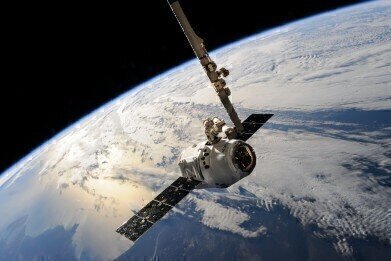News & Views
The Aftermath of Global Satellite Destruction
Oct 24 2015
While the world was only introduce to satellites 60 years ago, already we’ve become hugely reliant on the technology. Today, they’re a crucial part of our modern civilisation however due to their faraway locations and more or less invisible presence, humans have started to take their existence for granted. We may not give them much thought on a day to day basis but you can bet that if every satellite in the world suddenly crashed, all hell would break loose.
How would this happen? Nations at war, solar storms and theories such as the Kessler Syndrome could all knock our satellites out of action. As for what would happen if such occurrences did come to light… Read on for an overview of the tremendous disruptions we could face.
Communications down
Almost instantaneously our ability to communicate would become dire. All telecommunications support would fall on undersea and ground based cables which would stretch capacity to the absolute limit. Across the globe a plethora of TV, internet and phone lines would disappear.
Back to basic maps
Without satellites, GPS is impossible. While it’s ubiquitous today, we’d have to go back to relying on paper maps when plotting routes from A to B. Airlines would also suffer as they’d be unable to chart fuel efficient routes or communicate with in-air planes. Given the vast volume of air traffic, the probability of regular accidents would be more or less certain.
A jeopardised military
For the military, loss of satellite power would be severe. The space technology serves as the backbone of operations, with the Marshall Institute maintaining that “Space is a critical enabler to all U.S. warfare domains.” These include intelligence, navigation, communications, weather prediction and warfare.
Unexpected weather
Satellites are used to predict weather patterns. Without them, our ability to forecast dangerous storms, monsoons, cyclones and hurricanes would falter. In the US alone, satellite technology saves the government around $3 billion in weather damage control.
Across the globe, satellites play an important role in gathering data that’s shared with a multitude of different parties. ‘Putting Collaboration Data at the Core of Scientific Endeavour’ examines how shared data now sits at the heart of the new R&D model. In today’s communications-driven world the ability to communicate across time zones has led to externalisation, globalisation, virtualisation, open collaboration, open innovation and a myriad of other trends. Satellites play a key role in supporting the collaboration process by efficiently transferring information from A to B.
Digital Edition
Lab Asia 31.2 April 2024
April 2024
In This Edition Chromatography Articles - Approaches to troubleshooting an SPE method for the analysis of oligonucleotides (pt i) - High-precision liquid flow processes demand full fluidic c...
View all digital editions
Events
May 05 2024 Seville, Spain
InformEx Zone at CPhl North America
May 07 2024 Pennsylvania, PA, USA
May 14 2024 Oklahoma City, OK, USA
May 15 2024 Birmingham, UK
May 21 2024 Lagos, Nigeria










.jpg)







